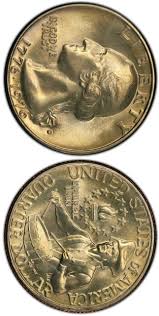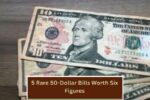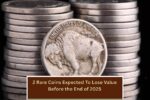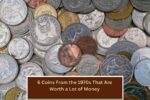A rare 1976 Bicentennial Washington Quarter recently fetched an astounding $19,200 at auction, surprising both casual coin holders and seasoned collectors. If you’ve got a stash of quarters lying around, it might be time to take a closer look—you could be holding a small fortune without realizing it.
What Makes This Quarter So Valuable?
The quarter in question is a 1976-S Bicentennial Quarter, minted in San Francisco and composed of 40% silver—unlike the standard copper-nickel clad quarters produced for circulation. What truly drives its value, however, is its pristine condition. This particular coin received a Mint State 69 (MS-69) grade from the Professional Coin Grading Service (PCGS), which ranks it just one level below perfect.
According to Coin World, only three examples of the 1976-S silver quarter are known to exist at this grade, making it a near-unicorn in the world of coin collecting.
“This coin is not just rare because of its silver composition—it’s the condition that elevates its worth dramatically,” notes a PCGS spokesperson.

Commemorating America’s Bicentennial
The 1976 Bicentennial Quarters were released to celebrate the 200th anniversary of American independence. Unlike regular quarters, these feature a dual date “1776–1976” on the obverse and a special reverse design showing a Colonial drummer boy, created by artist Jack L. Ahr.
These coins were produced by all three U.S. Mints—Philadelphia (no mint mark), Denver (D), and San Francisco (S)—but only the San Francisco Mint released the silver-clad versions, often as part of collector sets.
Other High-Value Bicentennial Quarters
This isn’t the first time a 1976 quarter has stunned collectors with its sale price. Other notable auction results include:
- A 1976-S Silver Proof Bicentennial Quarter sold for $13,500 in 2019.
- A double-denomination error coin (struck on a dime planchet) sold for $9,200 in 2020.
- A 1976-D clad Bicentennial Quarter with a Doubled Die Obverse (DDO) fetched $8,400 in 2023.
These results show that the combination of condition, composition, and rarity can send values soaring.
How to Know If You Have One
Here are some quick checks to determine if your Bicentennial Quarter might be worth more than 25 cents:
- Mint Mark: Look for an “S” on the obverse (San Francisco Mint).
- Silver Test: Silver quarters sound different and weigh more. A professional appraisal or silver testing kit may help.
- Condition: Coins in uncirculated or proof condition are most valuable. PCGS and Numismatic Guaranty Company (NGC) offer grading services.
- Error Coins: Striking errors or unusual features can add significant value. Learn more via the American Numismatic Association (money.org).
For proper valuation, submitting your coin for certification from trusted agencies like PCGS or NGC is key.

What If You Find One?
If you think you’ve found a potentially valuable Bicentennial Quarter:
- Do not clean the coin – this can drastically reduce its value.
- Handle it carefully, ideally by the edges and with gloves.
- Consult a certified coin dealer or grading service.
- Consider auctioning it through reputable auction houses like Heritage Auctions or Stack’s Bowers Galleries.
Final Thoughts
While it’s uncommon to find a $19,200 coin in pocket change, stories like this remind us that valuable coins are out there—sometimes sitting in jars or drawers, unnoticed for decades. The surge in interest among collectors also suggests that now might be the best time to dig through your spare change and start hunting.
So next time you’re handed a quarter in change, flip it over—you just might spot the Colonial drummer boy and start your own treasure story.
This article has been carefully fact-checked by our editorial team to ensure accuracy and eliminate any misleading information. We are committed to maintaining the highest standards of integrity in our content.

Outside of work, he enjoys playing chess, following cricket, and writing short stories. His commitment to integrity and in-depth analysis strengthens OTE News’ mission of providing trustworthy journalism.




